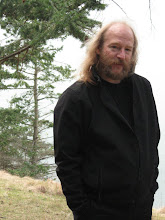The Mutual
Actualization of the Self and the World
The state that is visited by
brightness and by color may be present in this learning in practice. “I entrust
effects to effects themselves”: this expresses “natural realization.” “Natural
realization” means enacting causes and accepting effects. The world has causes,
and the world has effects. We enact the cause-and-effect that is this world,
and we accept the cause-and-effect that is the world. “The [natural] self” is
“itself,” and the self is inevitably just you, in other words, the four
elements and five aggregates.
Shobogenzo, Kuge, Gudo Nishijima & Mike Cross
We (the subject we call ‘myself’) ‘enact… this
world.’ The actualization of consciousness is an object enacted by a subject; a
subject enacts, an object is enacted. Notice that in the case that we
think, speak, or act in regard to a ‘subject’ enacted (e.g. ‘I felt myself
falling,’ ‘I made myself go,’ ‘I
reminded myself of my vow,’ etc.) we think, speak, or act
in regard to what is actually an ‘object.’ Further, to regard a subject as an
object, or to regard an object as a subject is, in either case, to regard an object – for ‘that which regards’ is
the subject in either case. And despite my objectification of the subject with
‘that which regards,’ my meaning should be clear enough; to treat an object as
a subject does not make an object a
subject. The subject is the enactor,
the object is the enacted. For
example, consider this expression of Dogen:
So
life is what I am making it, and I am what life is making me.
Shobogenzo, Zenki, Gudo Nishijima & Mike Cross
In the first clause, ‘life’ is the object and ‘I’
is the subject; in the second clause, ‘life’ is the subject and ‘I’ is the
object. Subject and object are nondual not one and the same, interdependent not
interchangeable, coessential not undifferentiated, coextensive not homogenous.
The subject is always the enactor, maker, or fashioner;
the object is always the enacted, made, or fashioned.
I am belaboring the point because without a firm
grasp it is easy to confuse the limitations and potentials of our actual
capacities, our true abilities to respond (hence our responsibilities) to the
world. For, while it is true that, in harmony with the principles of
nonduality, our (subjective) ‘self’ is all-inclusive (of ‘self/other’) and our
(objective) ‘world’ is all-inclusive (self/other), each, ‘self’ and ‘world,’
possesses unique qualities and characteristics. That is, if we fail to clearly
distinguish which qualities and characteristics belong to our self (enactor)
and which to the world (enacted) we will be unable to think, speak, or act normally
(from the enlightened perspective). In short, we will be confused about what we
actually can and cannot do in regard to ‘making life what it is.’
For example, according to the doctrine and
methodology of certain pseudo-Zen groups, individual beings (subjects) are
largely, or wholly enacted or fashioned by the (objective) world,
hence efforts to enhance the world are largely, or wholly futile, thus regarded
as symptoms of delusion. At the other extreme, for instance among some ‘New
Age’ movements, individual beings are supposed to fashion the world so completely that their worldly circumstances
(e.g. health, financial status, intelligence, etc.) are largely, if not
entirely of their own making. The ‘way’ to peace, happiness, or liberation
advocated by the former species is either to accept the world as it is, or else
to cultivate detachment or ‘goallessness’ and cut off desire and aversion. The
‘way’ of the latter species is to transform the world into a horn of plenty by
rooting out negativity by cultivating positive thoughts or ‘vibes’ with
affirmations of health, abundance, and happiness. In both of these ‘ways’ the
nature of subjective and objective reality, the truth of existence/experience
is seen as it is not, hence can only
obstruct their followers from the true Dharma.




No comments:
Post a Comment